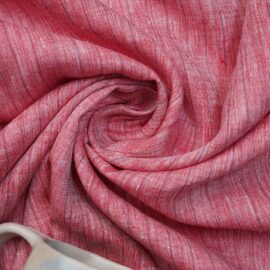We Made 100% Organic Hemp Fabric:
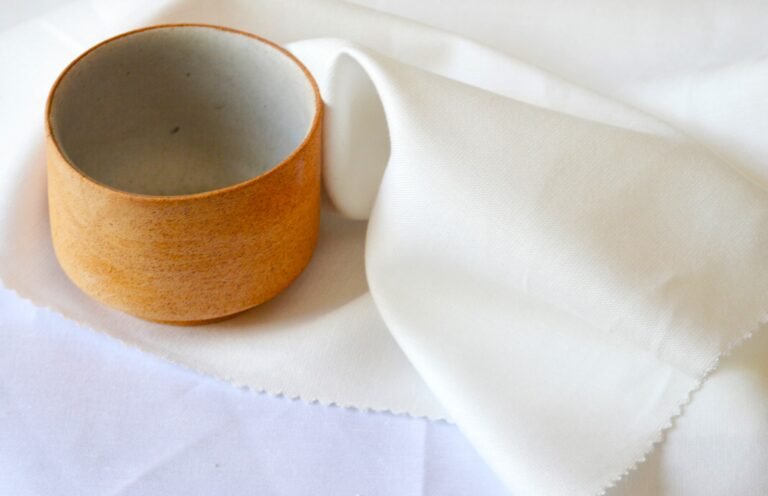
We are fabric hemp producers. An Environment-Friendly and Utility Product Recently, hemp fabric has been on the rise because of the many benefits that comes with the material and its environmentally friendly characteristics. This eco-friendly fabric is sourced from the plant known as industrial hemp fabric. the fabric is a yarn produced from the bast fibres of the plant making it a durable fabric which can be used as a substitute to the conventional fabrics such as cotton and polyester fabric.
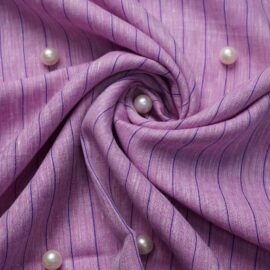
| Colours | Camel Beige, Dusty Lavendor, Icy Teal, Ocean Mist, Olive Green, Reddish Pink, Robin Egg Blue, Sunflower, Taupe Beige |
|---|---|
| Composition | 100% European Linen (60 Lea Yarn Dyed) |
| Weight | 120 GSM |
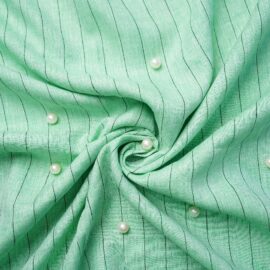
| Colours | Azure Tint, Chartreuse Yellow, Coral Red, French Blue, Mushroom Beige, Orchid Pink, Pistachio Green, Primrose, Soft Steel Grey |
|---|---|
| Composition | 100% European Linen (60 Lea Yarn Dyed) |
| Weight | 120 GSM |
is hemp a good material for clothing?
Absolutely! Hemp is an excellent material for clothing, and here’s why:
1. Eco-Friendly
100% organic Hemp fabric clothing is one of the most environmentally friendly crops. It requires minimal water, grows quickly, and doesn’t need pesticides or herbicides. This makes hemp textiles a sustainable choice for eco-conscious consumers.
2. Durability
Hemp fibers are incredibly strong and durable. Clothing made from hemp can withstand wear and tear better than many other fabrics, making it a long-lasting option.
3. Comfort
Hemp fabric is breathable and becomes softer with each wash. It has excellent moisture-wicking properties, keeping you cool in the summer and warm in the winter.
4. Antimicrobial Properties
Hemp has natural antimicrobial properties, which means it resists mold, mildew, and bacteria. This makes hemp clothing a great choice for those with sensitive skin or allergies.
5. Versatility
Hemp can be blended with other fibers like cotton, silk, or bamboo to create a variety of textures and finishes. This versatility allows for a wide range of clothing styles, from casual wear to high fashion.
6. UV Protection
Hemp fabric provides natural UV protection, shielding your skin from harmful sun rays. This is an added benefit for outdoor hemp fabric clothing.
What is Hemp Fabric Benefits :

- Sustainability: Hemp has low demand for pesticides and fertilizer hence would be of benefit to the ecology as opposed to the cotton plants.
- Durability: It also complies that the fibers of hemp are rather elastic, thus the fabric is practically wear-proven.
- Breathability: The clothes and fabrics take time to make so it makes use of natural fabrics such as hemp to make clothes that do not cause one to feel uncomfortable together with being very hot.
- Hypoallergenic: In other words, hemp fabric has fewer probabilities to cause allergies compared with any other fabrics such as cotton or wool.
- Antibacterial Properties: Hemp also has inherent characteristics of not easily degrading and is antiseptic, meaning that odor and bacterial growth is considerably limited.
- Moisture-wicking: It remains to understand that hemp fabric is highly effective in absorbing and transferring moisture away from the skin thus maintaining the skin dry.
The Hemp Fabric Frequency
As for the frequency of washing hemp fabric it depends on its application. For casual use it can be washed when necessary for the other fabrics that can be washed the following procedures was followed. However, it is very important to note that articles that may have been soiled big time or those articles that have been exposed to some certain smell may require washing more often than those mentioned above.
How is Hemp Fabric Made?
Hemp as fabric is made from the strong, fibrous stalks of the hemp plant, a variety stems of the Cannabis sativa L. [I purposefully did not mention marijuana here, though hemp is in the same cannabis family, to avoid confusion]. Hemp has been cultivated for thousands of years for its versatility and durability. It’s a bast fiber, like linen and flax, which means the usable fibers come from the inner stem of the plant.
Here’s a step-by-step breakdown of the process:
- Planting: In the process the first step involves sowing of shorter stemmed varieties that have little branching.
- Harvesting: They then harvest the slender stems that have already flowered after it produces seeds on them.
- Retting: Separating the long fibres in plants and spin into yarn is this process. Water retting or dew retting or chemicals is used for that purpose.
- Breaking and Scutching: Breaking is the subsequent stage after retting in the hemp processing sequence where the woody interior portion, or hurd, is crushed into smaller pieces and separated from the external bast fiber layer. Scutching, which means separating the fibers, takes place during this phase.
- Spinning: This is followed by spinning the hemp fibers into a continuous yarn and finally weaving them up with the thread used for clothing.
- Weaving: This process entails combing the fibers and intertwining them to produce a renewable yarn.
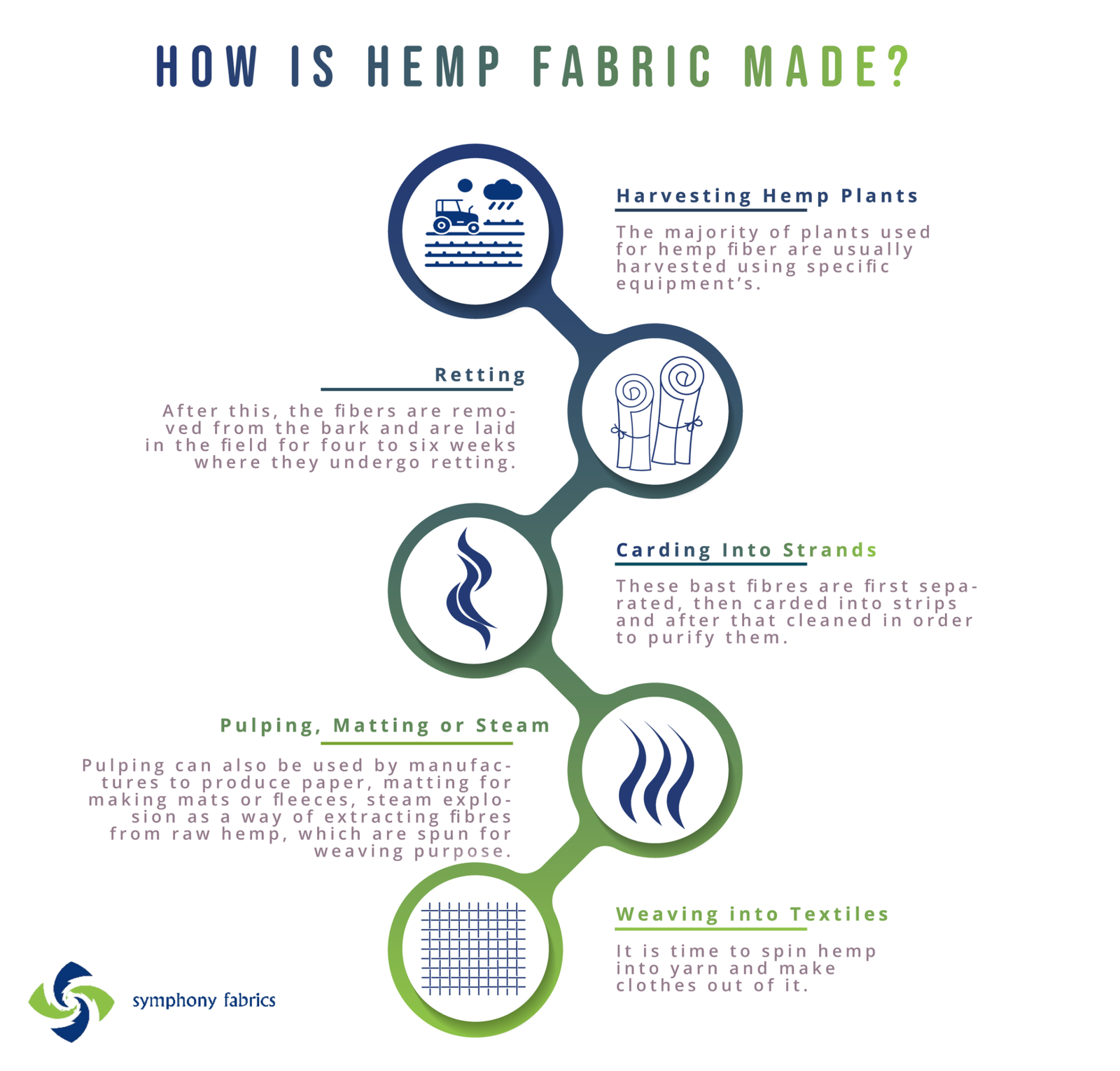
Hemp Material, Hemp Fiber
What is hemp fabric?
- Symphony’s Hemp Woven Fabric: Your Reliable Place for Hemp Clothes that Last and Can Be Used Many Ways.
Hemp cloth is becoming very popular nowadays because of its great features and being environmentally friendly. Fabrics by Symphony, a big company in the business, is happy to give good hemp fabrics. These fabrics are kind to nature and strong enough for many uses. In this article, we will look into the special features and advantages of hemp cloth. We’ll also show you why Symphony’s Fabrics should be your first choice for all things hemp fabrics related! - Sustainability: A Key Element
One big reason why people who care about the environment like hemp cloth is because it’s good for our earth. Hemp is a very quick-growing plant that needs little water and no bug killers or weed killers to do well. It also restores the dirt it grows in, making it a great choice for farming that makes things better.
- Symphony’s Fabrics gets its hemp from good and fair sellers who follow eco-friendly ways to grow plants. By picking Symphony’s cloth, you are not just helping to make farming good for the earth but also doing your bit for a cleaner and greener world.
- Durability that Lasts
In terms of toughness, hemp cloth is better than many other natural materials. Hemp fibers are very strong and can withstand damage. They can last for years without ever losing their quality or strength. This toughness makes hemp cloth a great pick for many uses, like making clothes, sitting covers and extra stuff.
- Symphony’s Fabrics knows how important strength is in fabrics. That’s why they have a lot of choices in hemp cloth, picked for how long they last and their strength. If you need fabric for tough jeans or a strong material to upholster, Symphony’s Fabrics will help you.
- Versatility for Every Need
Hemp cloth is very flexible, which makes it good for many types of uses. It can be mixed with other threads like cotton, silk or linen to make special and new fabrics. Hemp fabrics is known for its breathable and moisture-wicking properties, making it great for clothes in hot weather.
- Symphony’s Fabrics has a big selection of hemp fabric mixes, so you can find the right one for what you need. For summer clothes that are light and let your body get fresh air, Symphony’s Fabrics has many choices. They also have heavier blends for things like furniture covers and home decorations to suit everything you need.
- Quality Assurance with Symphony’s Fabrics
When we talk about hemp cloth, quality is very important. Symphony’s Fabrics knows this and makes sure all their things are made with the best quality possible. Each cloth gets checked and tested very carefully to make sure you get a top-notch product.
Why is Hemp Fabric Sustainable?
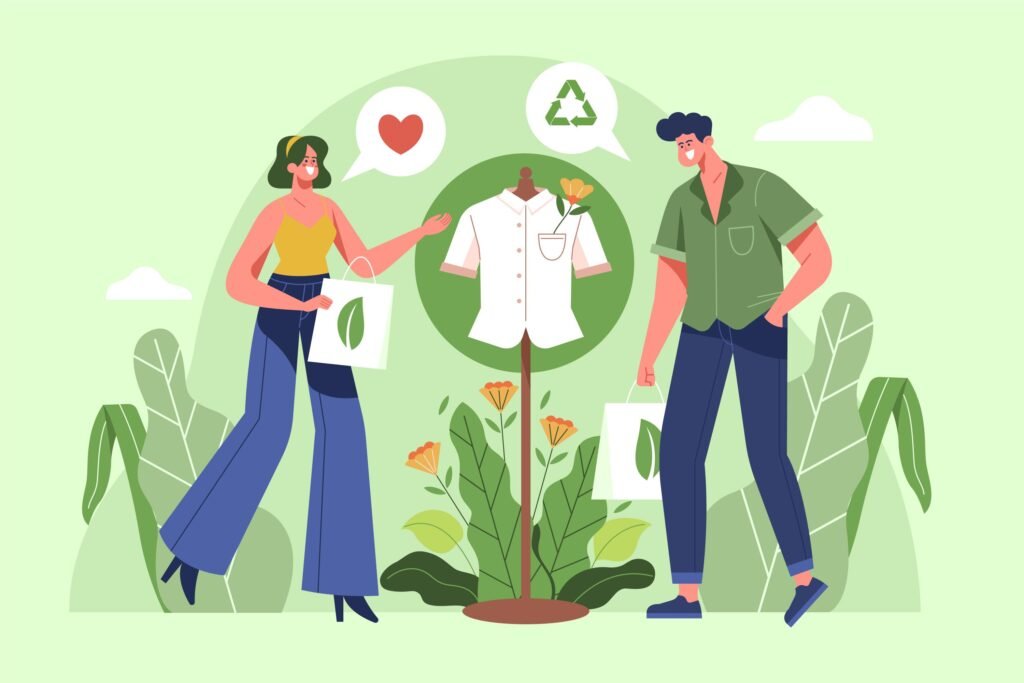
- Resource-efficient: The cycle of hemp is relatively rapid and it is more dense compared to crops such as cotton which therefore demands less area to be cultivated. Moreover, it requires not a lot of water to sustain itself as it calls for relatively small water compared to cotton crops.
- Soil health: Moreover, hemp plants have long and deep roots that hold soil on slopes and allow water to pass through the soil to delay water overflows and flooding. These contribute both to the conservation of the plants and foster the replenishment of nutrients in the soil for continuous crop rotation.
- Chemical-free growth: Hemp is a crop with high resistance to both insects and weeds, and it can therefore be grown with very little chemicals such as pesticides and herbicides, thus reducing pollution and promoting biodiversity.
- Durable: Hemp fibers are strong and long-lasting that clothing items made from hemp will have a longer lifespan than other items fashioned using other materials.This reduces clothing waste.
- Biodegradable: At the end of its life, hemp fabric goes out into the ground fast and is non-noxious, keeping out of danger the environment of other organism and things by the by-products it does not leave behind like microplastic filaments.
Can Hemp Fabric Be Dyed?
Yes, hemp fabric receives and retains color very well. In fact, several properties of hemp make it an excellent candidate for dyeing.
- Natural absorption: Among the properties which make hemp fibers popular choice for textile makers is their ability to absorb dyes resulting in a profound shade and quality.
- Porous nature: The ability to diffuse is one of the advantages of hemp over cotton due to the formation of a dye penetrating porous structure that enhance vibrant colors from the fabrics.
- Versatility: Hemp cloth may be dyed using either natural dyes or a range of synthetic colorants such as fiber-reactive and direct ones or even some acid or dispersed dyes.
How to Make Hemp Fabric
Unfortunately, most of the hemp fabric is industrially manufactured but homemade hemp fabric is as well possible. This comprises of growing marijuana plants, extracting the fibers from the same, twisting the fibers into yarns and finally fashioning the yarns into fabric either by weaving or knitting techniques.


